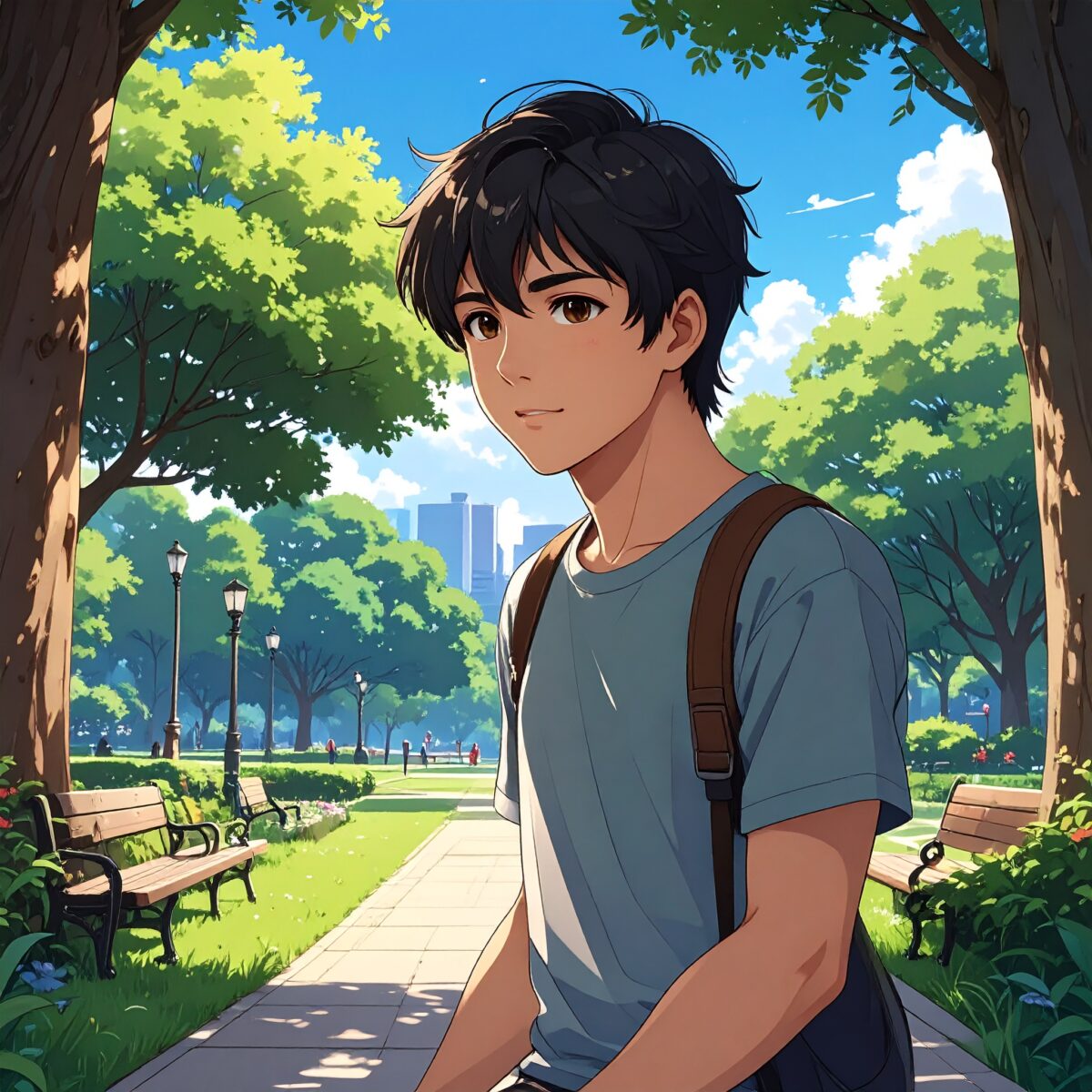Nestled between sea and mountains, Nagasaki is a city shaped by slopes and stories. During the Edo period, it was Japan’s only open gateway to the West, flourishing as a port of trade and cultural exchange. Its legacy continued through the Meiji era, with shipbuilding and international commerce playing vital roles.
Today, traces of that global past remain woven into the cityscape. Walking through Nagasaki is like following the footsteps of centuries of dialogue between Japan and the world. Two of the most iconic sites—Peace Park and Glover Garden—embody this unique identity, offering a place to reflect on peace and feel the enduring charm of a city touched by foreign influences.
Peace Park – A Quiet Space for Reflection and Remembrance
Just a 10-minute tram ride from Nagasaki Station, Peace Park stands as a solemn reminder of the atomic bombing on August 9, 1945. At its center is the iconic Peace Statue—its right hand pointing to the sky and left hand extended horizontally—a silent yet powerful symbol calling for peace. Visitors from around the world naturally slow their pace here, entering a space of contemplation.
Adjacent to the park, the Nagasaki Atomic Bomb Museum offers a sobering account of the devastation, with exhibits that convey the horrors of nuclear warfare. The photos, personal belongings, and testimonies speak not just to the eyes, but to the heart.
More than a sightseeing spot, Peace Park is a place of learning—a site everyone should visit at least once when coming to Nagasaki, to carry its message of peace into the future.

Glover Garden – Western Architecture and Exotic Scenery in the Hills of Nagasaki
Glover Garden captures the vibrant charm of Nagasaki’s international legacy. Perched on a hillside near Ōura Church, this open-air museum preserves and displays the former residences of foreign merchants and engineers who played pivotal roles in Japan’s modernization during the late Edo and Meiji periods.
As you wander through the grounds, you’ll find colonial-style wooden mansions surrounded by subtropical flowers, all overlooking the shimmering waters of Nagasaki Port. The scenery evokes the feeling of strolling through a small European port town. Among the highlights is the Former Glover House—Japan’s oldest surviving Western-style wooden residence—offering insight into the architectural elegance and lifestyle of a bygone era.
Glover Garden is also a popular filming location for movies and dramas, and seasonal events such as illuminations and light-up nights give the space a different allure after sunset. Day or night, this garden offers a unique blend of history, beauty, and nostalgia.
Walking Through Nagasaki
To walk through Nagasaki is to move through a city where slopes and streetcars define everyday life. The landscape is three-dimensional, offering shifting perspectives at every turn and countless photo-worthy scenes. While exploring historic sites like Chinatown, Dejima, and Megane Bridge is certainly rewarding, the true essence of a Nagasaki journey lies in its contrasts—pausing for reflection at Peace Park and immersing oneself in the Western atmosphere of Glover Garden. These two distinct experiences together express the unique charm of Nagasaki, a city where history, culture, and scenery blend seamlessly.
Nagasaki’s Quiet Resonance—Where Cultures and Peace Intertwine
A city where the winds of international exchange and the memory of peace still linger. Nagasaki does not dazzle with fleeting brilliance; instead, it leaves a lasting impression that gently seeps into the soul. From hilltops overlooking the sea to cobbled streets echoing with footsteps of the past, each step offers a quiet connection to the people and histories that shaped this place. For those seeking a journey rich in depth and tranquility, Nagasaki invites you to experience its serene and timeless charm.




